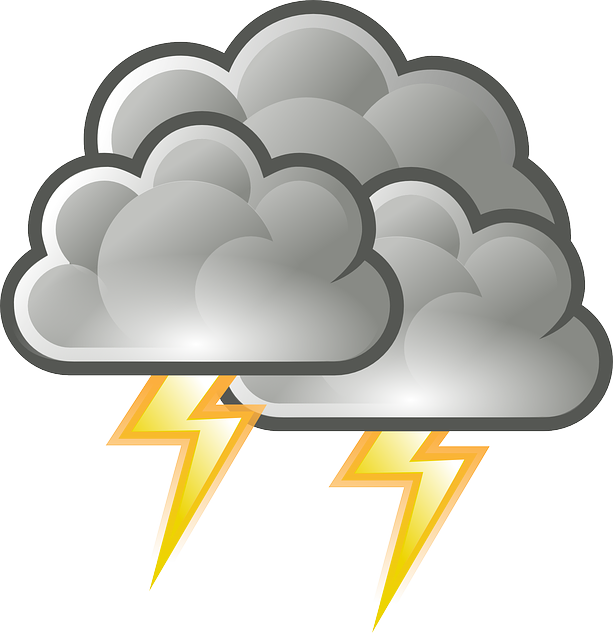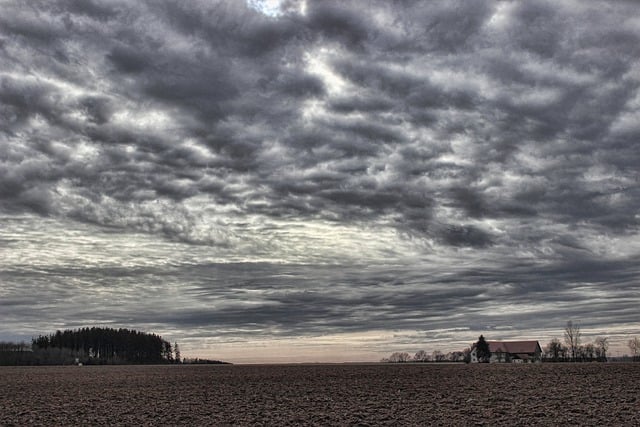Rising sea surface temperatures (SSTs) significantly impact weather patterns in Karachi, intensifying storms and increasing their frequency due to ocean-atmosphere interactions. With summer temperatures exceeding 30°C, Karachi becomes prone to tropical storms, posing challenges for disaster management and urban planning. Historical case studies show a strong correlation between warmer ocean waters and severe cyclones, like the 2007 cyclone that devastated parts of the city. Advanced data collection and analysis techniques, including satellite imagery and machine learning, help predict storm events more accurately. To mitigate risks, Karachi residents should prioritize adaptation strategies like staying informed, reinforcing structures, and participating in community preparedness programs to enhance resilience against storms.
In the dynamic coastal city of Karachi, sea surface temperatures (SST) play a pivotal role in storm development, posing significant challenges to its residents. This article delves into the intricate relationship between SST and storm formation, offering a unique perspective on Karachi’s coastal environment. We explore historical case studies, scientific research methodologies, and adaptation strategies to mitigate the impact of rising temperatures. Understanding these dynamics is crucial for enhancing preparedness and ensuring the safety of Karachi’s folks.
- Understanding Sea Surface Temperatures: The Basic Framework
- Karachi's Coastal Environment: A Unique Perspective
- Impact of Rising Temperatures on Storm Formation
- Case Studies: Historical Storms in Karachi Influenced by SST
- Scientific Research and Data Analysis Techniques
- Preparedness and Adaptation Strategies for Karachi Residents
Understanding Sea Surface Temperatures: The Basic Framework

Sea surface temperatures (SSTs) play a pivotal role in shaping weather patterns and influencing the intensity and frequency of storms, especially in coastal regions like Karachi. To understand this relationship, one must grasp the basic framework of ocean-atmosphere interactions. The Earth’s oceans absorb and store an immense amount of solar energy, which is then transferred to the atmosphere through evaporated water vapor. Warmer sea surface temperatures lead to increased moisture content in the air, providing the fuel for storm development. This process is particularly significant in tropical and subtropical regions, where SSTs often exceed 26°C.
In Karachi, situated on the Arabian Sea coast, rising sea surface temperatures have been linked to more frequent and severe storms. As global warming continues to raise ocean temperatures, it becomes increasingly crucial to study these relationships to predict and prepare for potential weather-related disasters. Understanding the basic framework of SSTs helps meteorologists and climate scientists model and forecast storm behavior, which can save lives and mitigate damage in coastal communities like Karachi.
Karachi's Coastal Environment: A Unique Perspective

Karachi, a vibrant metropolis nestled along Pakistan’s southern coast, presents a unique interplay between urban development and its adjacent marine environment. The city’s coastal area is characterized by warm sea surface temperatures (SSTs), which significantly influence local weather patterns and contribute to a dynamic atmospheric condition. These SSTs play a crucial role in storm development, as they provide the essential energy and moisture needed for intense weather systems to form.
The Karachi coastline experiences varying SSTs throughout the year, with summer months witnessing higher temperatures that can reach up to 30°C, fostering ideal conditions for tropical storms. This unique coastal dynamic not only shapes local meteorology but also poses challenges and opportunities for the city’s residents and infrastructure, highlighting the intricate relationship between urban centers and their marine surroundings in the context of storm development.
Impact of Rising Temperatures on Storm Formation

Rising sea surface temperatures (SSTs) have a profound impact on storm development, particularly in coastal regions like Karachi. As global warming intensifies, ocean waters warm up, providing more energy and moisture to fuel convective processes. This increased heat content leads to enhanced evaporation, creating conditions ripe for thunderstorm formation and intensification. Warmer SSTs also lower the pressure barrier, allowing storms to strengthen as they move over warmer waters.
In Karachi, where coastal communities are already vulnerable to extreme weather events, rising SSTs amplify the risk of severe storms and cyclones. The city’s strategic location makes it susceptible to tropical disturbances, and higher temperatures can lead to more frequent and intense storms, posing significant challenges for disaster management and urban planning. Understanding these temperature-storm relationships is crucial for building resilience and preparing for a changing climate in Karachi and similar coastal cities around the world.
Case Studies: Historical Storms in Karachi Influenced by SST

In recent years, scientists have turned their attention to historical case studies to understand how sea surface temperatures (SST) have influenced severe storms in Karachi, a bustling coastal metropolis. By examining past weather patterns and SST anomalies, researchers have uncovered significant correlations between warmer ocean waters and the intensity of cyclones and hurricanes that have impacted the region.
One notable example is the 2007 cyclone that devastated parts of Karachi. Analysis of SST data revealed unusually warm waters in the Arabian Sea, which provided an ideal fuel source for the storm’s rapid development. This event underscores the growing concern among meteorologists about the potential for more frequent and severe weather events due to rising sea surface temperatures linked to climate change.
Scientific Research and Data Analysis Techniques

Scientific research into sea surface temperatures (SSTs) has significantly advanced over recent years, thanks to advancements in data collection and analysis techniques. Researchers now employ sophisticated satellite imagery and temperature sensors to monitor global SSTs with unprecedented precision. These tools enable them to track not just average temperatures but also regional variations, helping to identify hot spots that can fuel storm development. In the context of Karachi, for instance, scientists have used these methods to study how warming seas influence monsoonal patterns, which directly impact the city’s weather and climate.
Data analysis plays a pivotal role in interpreting SST data. Advanced statistical models and machine learning algorithms are employed to extract meaningful trends and correlations from vast datasets. By analyzing historical SST records alongside meteorological data, researchers can predict with greater accuracy the likelihood of severe weather events like cyclones and storms. This knowledge is crucial for early warning systems, allowing communities like Karachi to prepare and mitigate potential impacts, ensuring better resilience against climate-related hazards.
Preparedness and Adaptation Strategies for Karachi Residents

Karachi, as a coastal metropolis, faces unique challenges due to rising sea surface temperatures, which can significantly impact storm intensity and frequency. To prepare for these potential weather events, residents should consider implementing several adaptation strategies. One crucial step is staying informed about weather forecasts and alerts, enabling timely evacuation or shelter-in-place decisions. Additionally, securing homes with robust structures and impact-resistant windows can minimize damage from strong winds and flying debris.
Community preparedness programs play a vital role in educating residents on safe practices during storms. This includes learning how to turn off utilities to prevent flooding-related hazards and preparing emergency kits with essential supplies. By fostering a culture of resilience, Karachi’s residents can better navigate the challenges posed by extreme weather events, ensuring their safety and well-being.
In conclusion, sea surface temperatures play a pivotal role in shaping storm development, as demonstrated through the unique coastal environment of Karachi. Understanding the intricate relationship between SST and storms is crucial for enhancing preparedness and adaptation strategies among residents. Historical case studies highlight the increasing frequency and intensity of storms in Karachi due to rising temperatures, emphasizing the need for robust climate change mitigation and resilience measures. By leveraging scientific research and data analysis techniques, we can better navigate the challenges posed by these meteorological events, ensuring a more sustainable future for the vibrant city of Karachi.
